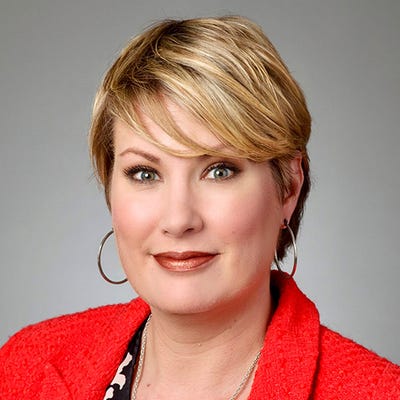The MSP business management software space is growing up fast.

Last week, investment firm Thoma Bravo announced it’s acquiring ConnectWise, the last major player in the MSP business management space to accept private equity. It’s a sign to many that the market is on its way toward being a fully-mature sector, but what does that really mean?
Most business experts identify four general stages of any market’s growth:
Introduction: A hot new technology or product first enters the picture, usually in startups.
Growth: As more customers adopt a technology, you see improved features, easier navigations, complementary product releases, and more accessible pricing.
Maturation: The big players cement their place at the top of the heap, which makes it harder for new entrants to get off the ground, the tech becomes mainstream and widely adopted, driving down price, and innovation slows down.
Decline: The tech becomes obsolete, the big players have to evolve or die, and customers begin to adopt the next generation of products.
Managed services straddles the second and third stage right now, moving from a growth industry to a mature market at warp speeds. The market leaders are pulling away from the rest of the pack, and they’re driving consolidation through mergers with or acquisitions of other providers and, as we saw last week with ConnectWise’s acquisition by Thoma Bravo, helped in large part by institutional investors.
This is great news for MSPs wanting to build a business in a more civilized IT channel, where the Wild West “anything goes” ethos is beginning to be replaced by market forces that want order and some level of predictability. Partners should also be encouraged by the billions of dollars of private equity flowing into the managed services space as big-deal investors acknowledge the market with a flurry of acquisition activity. In the last little more than five years, the top five players in the MSP business management software space – Kaseya, Datto (Autotask), SolarWinds, Continuum, and ConnectWise – have all accepted private-equity buyouts. And while the terms of most of those deals are undisclosed, the combined total of those deals conservatively adds to $8-$10 billion or so. (The general market consensus estimates ConnectWise’s price at about $1.5 billion. Not a bad day for founder and former CEO Arnie Bellini.)

Continuum’s Michael George
“These guys don’t buy companies at the end of the life of an industry,” says Michael George, CEO of Continuum.
Investment firm Thoma Bravo owns Continuum and now ConnectWise, and retains a major stake in SolarWinds, which it took private in 2016 and then public again last year.
“They buy them in the beginning, and this is just the beginning … The best is yet to come.”
Insight Venture Partners picked up Kaseya in 2013, and Vista Equity Partners bought Datto in 2017, merging it with Autotask. These three private-equity firms are some of the most well respected in the country, and their heavy investment into the managed services market is a very good sign for MSPs.
“It shows that the business MSPs are in – providing IT solutions for small to midsize companies – is something that three of the top investment firms in the world believe is a place to place billion-dollar bets,” explains Fred Voccola, CEO of Kaseya. “So if you’re a local MSP…know that some of the smartest people in the world think …
… you’re in the right sector, which is super freaking cool.”
A Bumpy Road for ConnectWise?
When ConnectWise announced the buyout, it admitted to an immediate round of layoffs in the same breath. Bellini called it an overdue realignment. Such collateral damage is expected in the wake of an acquisition like this, and the industry knows from recent experience that it likely won’t be the last shake-up. Last year, Datto’s longtime CEO Austin McChord abruptly left the company’s C-suite almost one year to the day after the Vista buyout, joining a slew of other executive departures in the wake of the company’s merger with Autotask. And Kaseya’s Voccola still cringes when he looks back on the restructuring chaos following the company’s acquisition by Insight.

Kaseya’s Fred Voccola
“It was a painful 2013, ’14 and ’15 for Kaseya,” he recalls. “It takes a year to 18 months to get the right mix. And when you have those reductions, it hinders the company’s ability to operation. Everything changes. There’s nothing unique about what ConnectWise is about to experience.”
At the end of the day, Thoma Bravo’s investment in ConnectWise will lead to a stronger, better-positioned company. As it moves from that growth stage into maturity, operations will be streamlined and scaled, investments into product developments will be optimized and the caliber of both the tech and executive staffs should rise. The long-term outlook for ConnectWise is promising, but those who have watched its competitors go through this cringeworthy adjustment stage are bracing for some bumps. And while the cash infusion should someday pay off in terms of products, services and support, there’s potential for stagnation in the short term.
“Here’s how these deals work,” explains Voccola. “[Thoma Bravo] paid [$1.5 billion] for it. Probably put $500 million of debt into a billion of equity. They’ve got to service that debt, probably at around 7-9 percent …That’s $35-50 million dollars a year to service your debt.”
If that’s how it plays out, the initial round of layoffs might just be the beginning. Investors call it “expense management” or “realignment,” but often that means cutting costs, and where those cuts come is unique to each business’s ledger sheet. Common victims are support, back-office administration, executive salaries and R&D.
On the other hand, you don’t grow a company in the long term by slashing expenses. Thoma Bravo bought ConnectWise because it believes it’s a sound investment, and when you’re talking that much money in an industry that’s maturing as fast as this one is, investments into those same areas may come surprisingly quickly. As Continuum’s George puts it, by their very nature, investment firms don’t “save their way to success.”
“You don’t keep cutting into a company to derive success,” says George. “That might have happened at the onset, and that may happen again. I can’t speak for what their plans are in that regard. But I can tell you that the general investment thesis of a company like Thoma Bravo is to find ways to invest in companies, not to keep cutting costs out of them.”
Thoma Bravo’s Growing Family
There’s been speculation that Thoma Bravo may bring some of its managed-services family together. That’s what happened when Venture bought Datto and merged it with Autotask, and last year, Kaseya brought fellow Insight-owned provider Unitrends into its fold. While Thoma retains a controlling share of SolarWinds – together with Silver Lake Partners, they own approximately 88 percent of the company’s shares – it no longer owns the company, but it still has …
… Continuum and now ConnectWise, in addition to Barracuda and other providers. Mature markets generally count three, maybe four big leaders that own 75 or 80 percent of market share, leaving niche players and new entrants to squabble over the remainder. So wondering if Thoma will consolidate its assets isn’t unreasonable.
But George and Voccola aren’t so sure that’s a move we’ll see anytime soon. Voccola predicts Thoma is betting on the sector, not on individual providers, similar in spirit to a mutual fund for the MSP business-management solution space.
“[Let’s say hypothetically] we really like the medical marijuana space. I might buy 10 companies in it because the market’s so big, even the ones that lose are still gonna do well,” Voccola explains, with a caveat. “But I’m just one dude. If I had all the answers, I’d be running Thoma Bravo.”
George points out Thoma doesn’t have a history of buying and consolidating assets and insists that each investment can stand on its own. After all, each company is run out of separate funds, with separate boards, limited partners and management teams.
“We have separate everything,” says George. “I know the CEOs of all these companies. We just make good rational business decisions for our own businesses and don’t really give any credence to the fact that we happen to go to the same family reunion.”
Read more about:
MSPsAbout the Author(s)
You May Also Like


